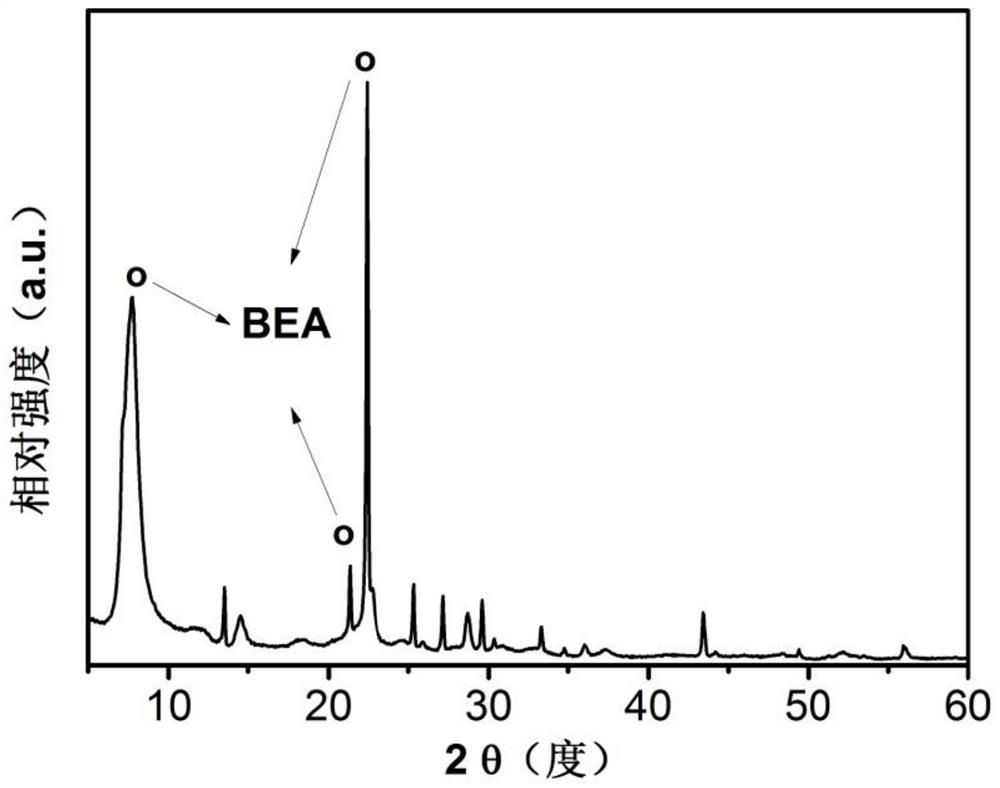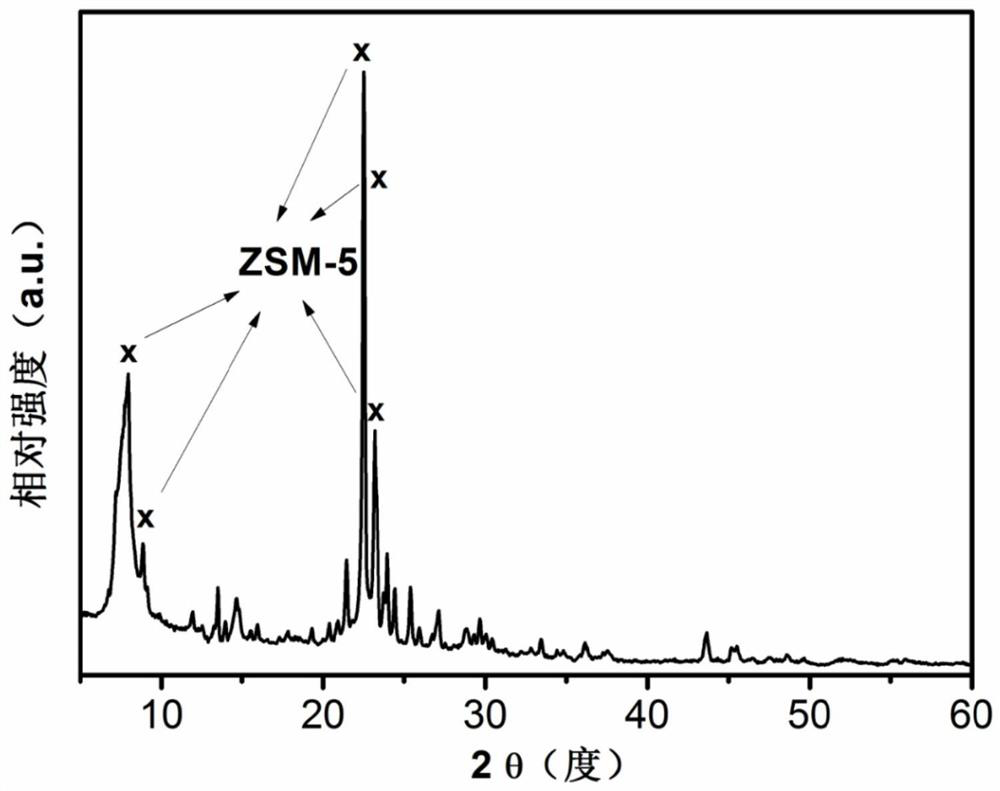Catalyst for preparing hexamethylenediamine and its preparation method and application
A catalyst, hexamethylenediamine technology, used in molecular sieve catalysts, chemical instruments and methods, physical/chemical process catalysts, etc., can solve the problems of high toxicity of adiponitrile, dependence on imports, high price, etc. Stability, effect of route cleaning
- Summary
- Abstract
- Description
- Claims
- Application Information
AI Technical Summary
Problems solved by technology
Method used
Image
Examples
Embodiment 1
[0074] The preparation of embodiment 1 metal@molecular sieve catalyst
[0075] (1) 0.03gRuCl 3 ·3H 2 O was dissolved in water, and the volume was adjusted to 12mL, and 10g of HBeta molecular sieve (SiO 2 / Al 2 o 3 Molar ratio = 800, SiO 2 The mass content is 98.9%), the RuCl 3 ·3H 2 O was loaded on HBeta, dried in an oven at 100°C for 12 h, and H 2 Reduction at 500°C for 4 hours in the atmosphere to obtain metal-loaded Ru / HBeta molecular sieves;
[0076] (2) Place the metal-loaded Ru / HBeta molecular sieve in 15 mL of TPAOH aqueous solution with a mass fraction of 35.0%, immerse at room temperature for 2 hours, and dry in an oven at 100° C. for 12 hours to obtain the / HBeta molecular sieve with TPAOH adsorbed in the pores;
[0077] (3) Mix the / HBeta molecular sieve with TPAOH adsorbed in the channel with 0.6g sodium hydroxide and 20mL deionized water, and crystallize at 90°C for 6 hours to obtain Ru@ZSM-5 molecular sieve;
[0078] (4) Roast Ru@ZSM-5 molecular sieve at...
Embodiment 2-10
[0080] The preparation of embodiment 2-10 metal@molecular sieve catalyst
[0081] The same steps in Example 1 were used to prepare M@ZSM-5, and the metal type and loading amount were adjusted by changing the type and concentration of the metal salt solution. The specific synthesis conditions are listed in Table 1. The mass content of metals in M@ZSM-5 was tested by ICP-OES.
[0082] The specific synthetic conditions of each embodiment of table 1
[0083]
[0084]
[0085] In the table, in the catalyst nA@ZSM-5, A represents the noble metal, ZSM-5 is the abbreviation of HZSM-5, n represents the mass loading of the noble metal in M / HBeta, W(%) represents the amount of metal in M@ZSM-5 mass content.
[0086] Embodiment 1-10 Characterization of metal@molecular sieve catalyst
[0087] figure 1 It is the XRD spectrogram of the HBeta molecular sieve used in Example 1; the catalyst obtained in Examples 1 to 10 is a ZSM-5 molecular sieve, and a typical representative is as ...
Embodiment 11-20
[0088] Reaction Performance Evaluation of Embodiment 11-20 Metal @ Molecular Sieve Catalyst
[0089] Pack 2.0g of the above-mentioned catalyst in a stainless steel fixed-bed reactor with an inner diameter of 10mm and a length of 300mm. Both ends of the catalyst are filled with quartz sand. First, a reducing gas is introduced at a flow rate of 30mL / min, and the catalyst is reduced at 400°C. 4h, wherein the reducing gas is composed of H 2 / N 2 Composition by volume ratio 1 / 4.
[0090] After the reduction, the temperature of the reactor was lowered to 130°C, the reaction pressure was raised to 6.0Mpa, and H 2 , liquid ammonia and adipaldehyde for reductive amination reaction, wherein liquid ammonia and adipaldehyde are respectively injected into the reactor through a high-pressure micro-feed pump, and the mass space velocity of adipaldehyde is 1.0h -1 , H 2 :NH 3 : the mol ratio=15:30:1 of adipaldehyde, react 10h sampling analysis, and reaction result is listed in table 2. ...
PUM
 Login to View More
Login to View More Abstract
Description
Claims
Application Information
 Login to View More
Login to View More - R&D
- Intellectual Property
- Life Sciences
- Materials
- Tech Scout
- Unparalleled Data Quality
- Higher Quality Content
- 60% Fewer Hallucinations
Browse by: Latest US Patents, China's latest patents, Technical Efficacy Thesaurus, Application Domain, Technology Topic, Popular Technical Reports.
© 2025 PatSnap. All rights reserved.Legal|Privacy policy|Modern Slavery Act Transparency Statement|Sitemap|About US| Contact US: help@patsnap.com



